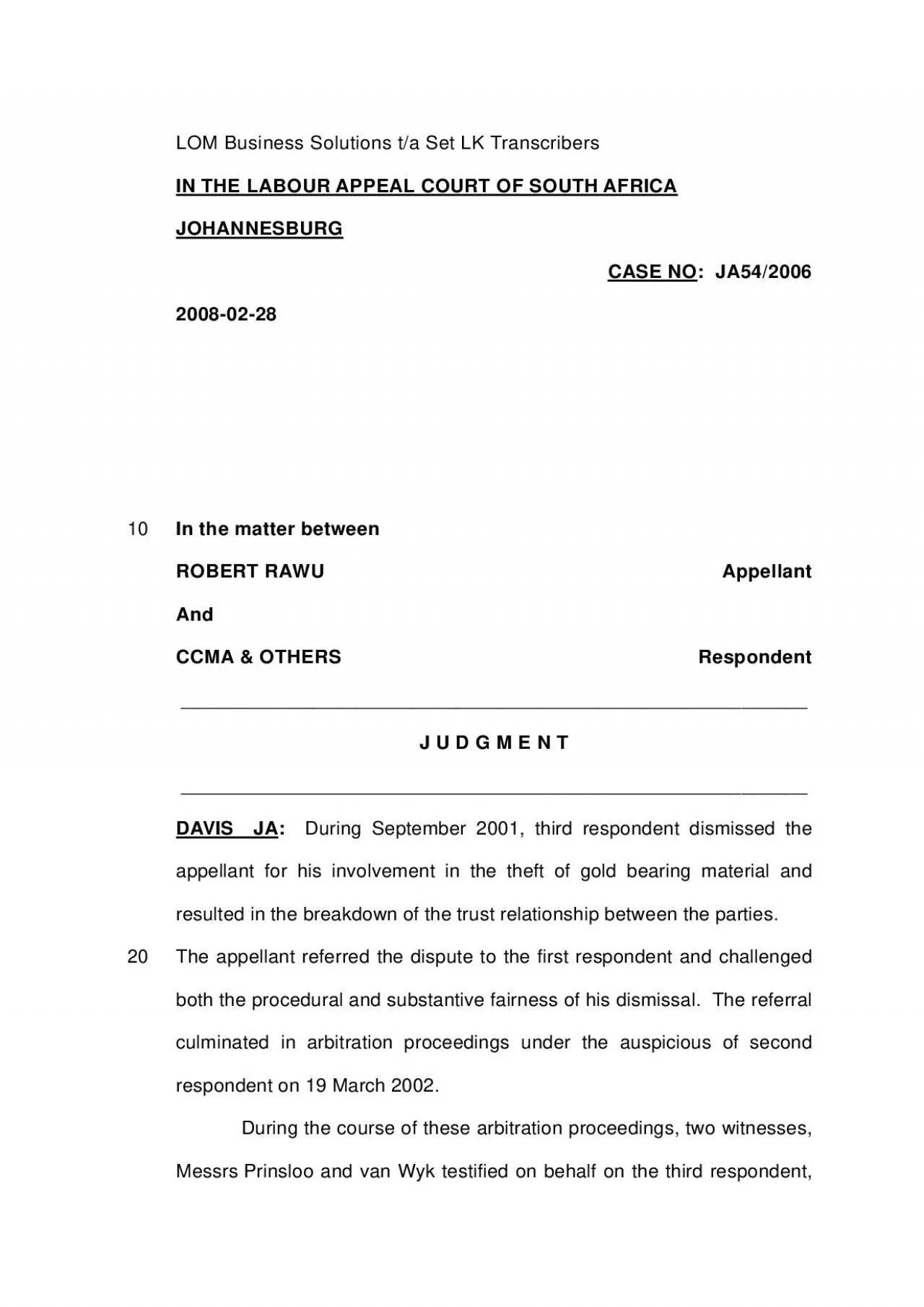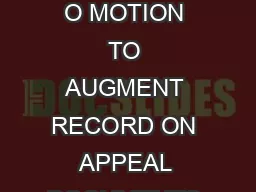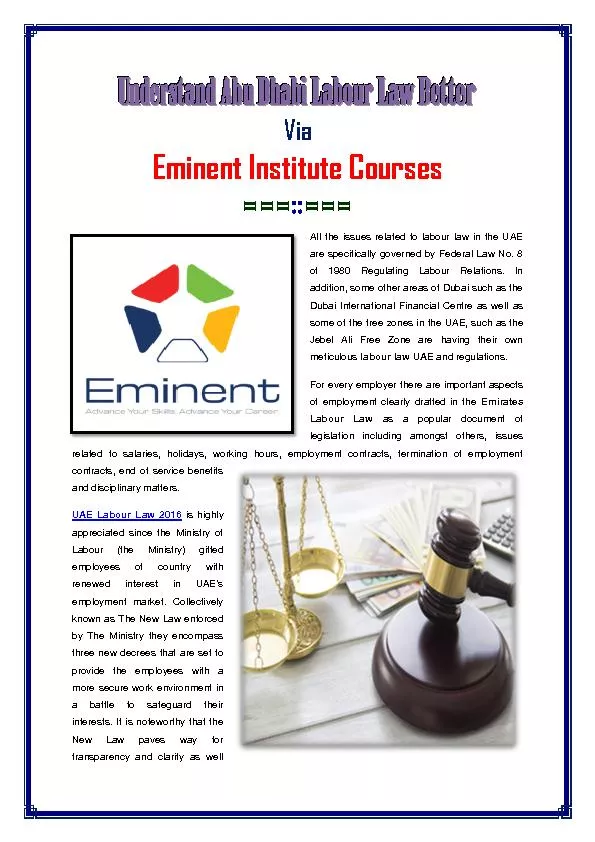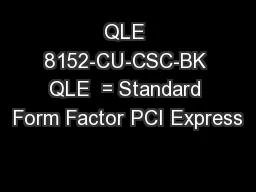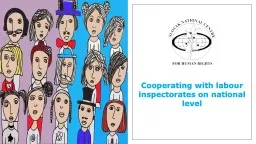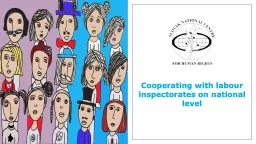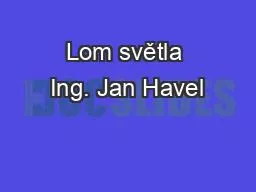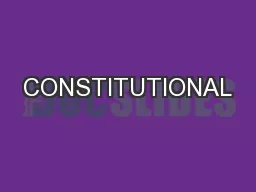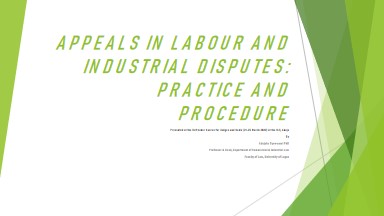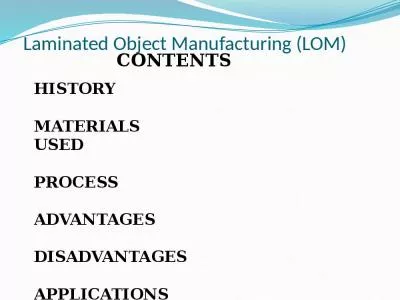PDF-LOM Business Solutions ta Set LK Transcribers IN THE LABOUR APPEAL CO
Author : mia | Published Date : 2021-09-07
JOHANNESBURG CASE NO JA542006 20080228 In the matter between 10 ROBERT RAWU Appellant And CCMA OTHERS Respondent J U D G M E N T DAVIS JA During September 2001 third
Presentation Embed Code
Download Presentation
Download Presentation The PPT/PDF document "LOM Business Solutions ta Set LK Transcr..." is the property of its rightful owner. Permission is granted to download and print the materials on this website for personal, non-commercial use only, and to display it on your personal computer provided you do not modify the materials and that you retain all copyright notices contained in the materials. By downloading content from our website, you accept the terms of this agreement.
LOM Business Solutions ta Set LK Transcribers IN THE LABOUR APPEAL CO: Transcript
Download Rules Of Document
"LOM Business Solutions ta Set LK Transcribers IN THE LABOUR APPEAL CO"The content belongs to its owner. You may download and print it for personal use, without modification, and keep all copyright notices. By downloading, you agree to these terms.
Related Documents

